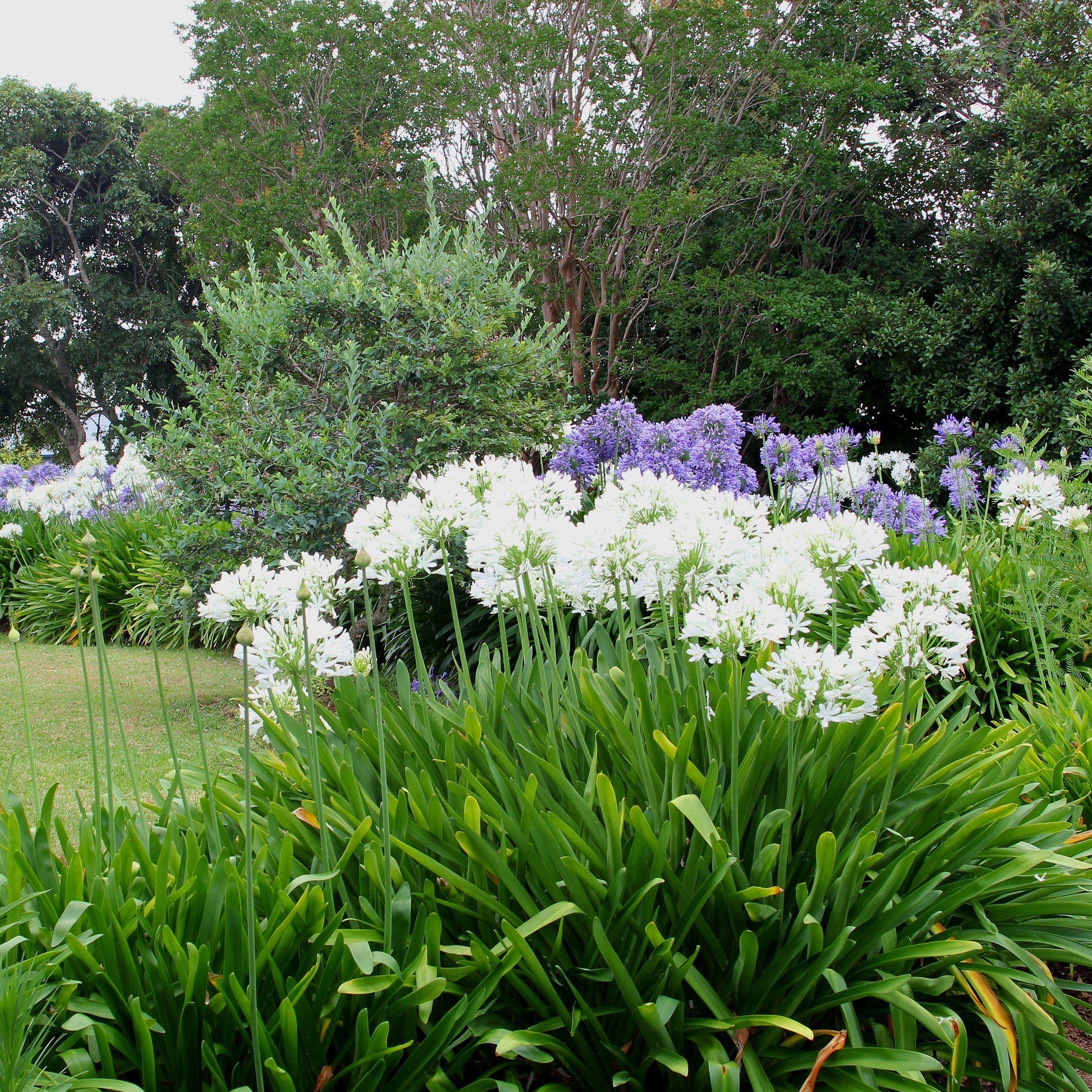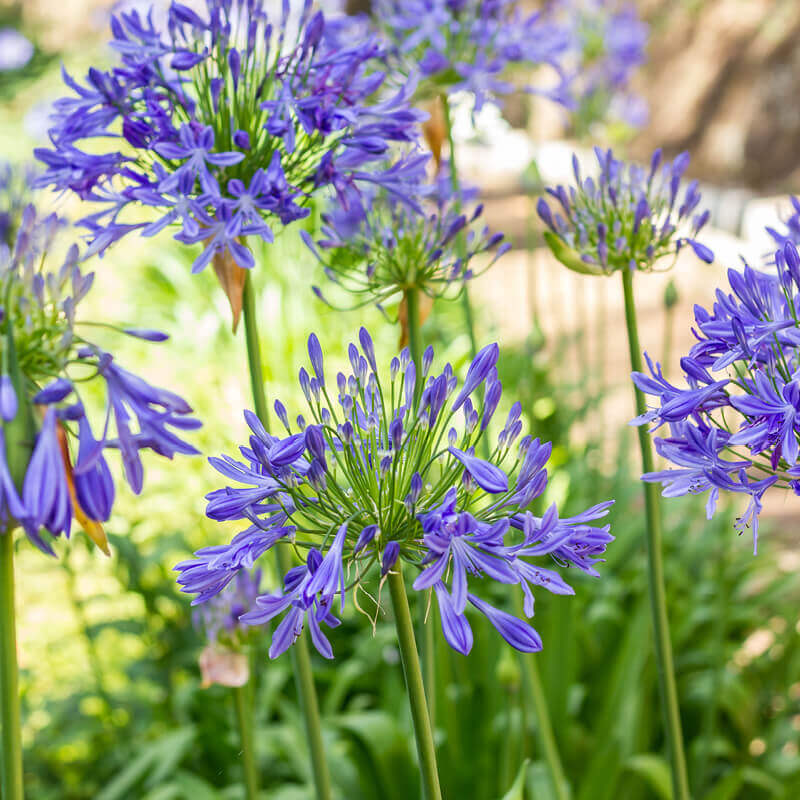Expanding Agapanthus: A Complete Overview to Beautiful Blooms
Expanding Agapanthus: A Complete Overview to Beautiful Blooms
Blog Article
Mastering the Art of Agapanthus Care: Crucial Steps for Healthy Development and Lively Blossoms
In the world of cultivation, the cultivation of agapanthus stands as a rewarding undertaking for those that seek to support these classy flowering plants. From choosing the appropriate range to mastering pruning techniques, the trip in the direction of cultivating growing agapanthus plants is diverse and holds the vital to unlocking the full capacity of these agricultural treasures.

Selecting the Right Agapanthus Selection

When choosing the best Agapanthus variety for your yard, consider elements such as environment suitability, blossom color, and growth habit. Additionally, take into consideration the climate in your region to guarantee the Agapanthus selection you select can thrive in your details problems. Recognizing the development routine of different Agapanthus selections is crucial for proper placement within your yard.
Ideal Planting Problems
Considering the optimal ecological requirements is crucial for effective Agapanthus farming. Agapanthus thrives in well-draining dirt with a slightly acidic to neutral pH level. When growing, pick a place that receives full sunlight to partial shade. In hotter environments, supplying some mid-day shade can protect against scorching of the leaves. Agapanthus plants are sensitive to cool temperatures and must be protected from frost during wintertime months.
To make sure healthy and balanced development and vivid flowers, plant Agapanthus bulbs at a deepness of regarding 2-4 inches and space them 8-12 inches apart. Mulching around the base of the plants helps retain dampness and suppresses weed growth.
Watering and Fertilizing Tips
Maintaining correct wetness levels and offering essential nutrients are key elements in the care routine for Agapanthus plants. When it comes to sprinkling Agapanthus, it is vital to strike a balance. These plants favor continually moist dirt however are vulnerable to root rot if overwatered.
Fertilizing Agapanthus is necessary for promoting healthy and balanced development and prolific blooms. Use a well balanced plant food, such as a 10-10-10 formula, in the early spring as new development emerges. Repeat this application every 6-8 weeks throughout the expanding period. Avoid extreme read this article fertilization, as it can bring about rich foliage at the expenditure of blooms. Always adhere to the manufacturer's guidelines for appropriate dilution and application approaches. By following these watering and fertilizing tips, you can ensure your Agapanthus plants flourish and create dynamic, lasting blossoms.
Pruning Methods for Agapanthus
Trimming Agapanthus plants at the proper times and with appropriate techniques is critical for preserving their health and promoting optimum growth and blooming. The excellent time to trim Agapanthus is in late winter season or very early spring before brand-new development emerges.
Deadheading spent flowers can likewise reroute the plant's power right into creating more blossoms rather than setting seeds. If you desire to accumulate seeds for propagation, leave some flowers to fully grown and completely dry on the plant.
Bear in mind to make use of clean, sharp tools to make accurate cuts and minimize the danger of introducing diseases. Agapanthus. see this here Regular trimming will certainly aid maintain your Agapanthus looking healthy and neat while ensuring a plentiful screen of beautiful flowers
Managing Usual Parasites and Diseases
After guaranteeing correct trimming strategies for Agapanthus, it is important to address common bugs and diseases that can impact the wellness and vitality of these plants. One common pest that affects Agapanthus is the Agapanthus gall midget.
One more usual concern is fungal leaf area, which presents as dark sores on the leaves. To avoid fungal diseases, guarantee great air flow around the plants, avoid overhead watering, and remove any contaminated fallen leaves promptly. Furthermore, Agapanthus plants can struggle with root rot if they are grown in badly draining pipes dirt. To stop this, plant Agapanthus in well-draining soil and prevent overwatering. By being alert and taking punctual activity against conditions and bugs, you can help your Agapanthus plants grow and create lively blooms.

Verdict
To conclude, understanding the art of agapanthus care includes choosing the appropriate variety, offering useful content suitable planting conditions, correct watering and feeding, appropriate pruning methods, and dealing with common bugs and conditions. By following these vital actions, you can make certain healthy growth and vibrant flowers for your agapanthus plants. Keep in mind to regularly keep an eye on and maintain your plants to advertise their overall wellness and long life.
To make certain healthy growth and lively flowers, plant Agapanthus bulbs at a deepness of concerning 2-4 inches and space them 8-12 inches apart. By complying with these watering and fertilizing tips, you can ensure your Agapanthus plants prosper and produce vivid, durable flowers.
One common parasite that impacts Agapanthus is the Agapanthus gall midget. Additionally, Agapanthus plants can suffer from origin rot if they are grown in inadequately draining dirt. By adhering to these important steps, you can guarantee healthy and balanced development and lively blooms for your agapanthus plants.
Report this page